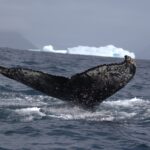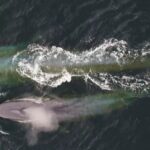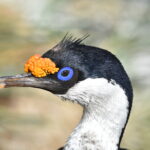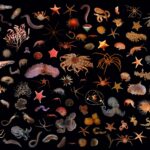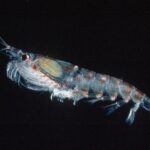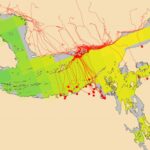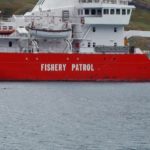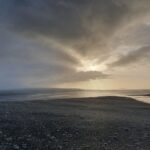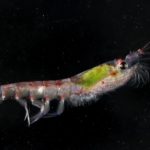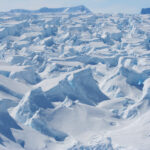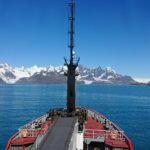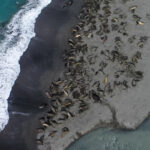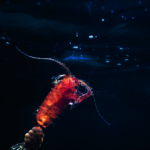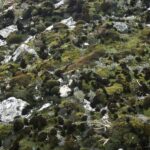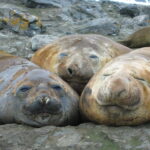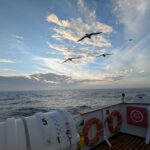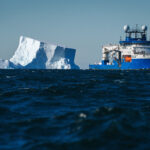Remote and hostile, Antarctica harbours some of the most amazing creatures on the planet. It is also a powerful natural laboratory for studying biodiversity, evolution and the impacts of climate change. Cut off from the rest of planet, Antarctica’s isolation and its cold climate have allowed some unique species to evolve.
Mostly covered in ice and snow, Antarctica is the driest, coldest and windiest continent on Earth. Little of its land surface can support life, so the communities of plants and animals that survive there consist of only a small number of species living in simple relationships. Because of the simplicity of these communities, Antarctica is an exceptionally useful place for scientists to uncover how ecosystems work.
Some of the creatures in these communities are particularly interesting. Known as nematodes, their ancestors survived on tiny areas of land left uncovered during the last ice ages, more than one million years ago. By studying these nematodes, scientists at British Antarctic Survey (BAS) are able to increase our understanding of evolution and help reconstruct Antarctica’s glacial history.
Unlike the land, the seas around Antarctica are home to a rich and diverse group of species that have evolved some unique ways of coping with the cold. Some Antarctic fish, for example, are the only vertebrates in the world that do not use red blood cells to carry oxygen around their bodies.
But because they are so well adapted to the cold, some of these species may not be able to cope with life in a warmer world. Climate change is likely to have a major impact on Antarctic species. From their research stations on and around the Antarctic Peninsula – one of the fastest warming parts of the planet – BAS scientists are well placed to study how these species are responding to climate change.
Compared with our understanding of the continent’s plants and animals, we know very little about Antarctica’s microbial life. Invisible to the naked eye, these organisms play a vital role in Antarctic ecosystems and, because they may help us produce new antibiotics and other compounds, are rich but untapped resource. At BAS, scientists are using state-of-the-art genetic methods to study the DNA of these microbes and, hopefully, harness their potential.
Welcome to the Resource Page for Expedition Staff, Passengers, and anyone interested in contributing to whale research and conservation in South Georgia! The Wild Water Whales project studies the recovery …
It is now estimated that >30,000 whales visit South Georgia in summer, making this sub-Antarctic island the highest-density UK hotspot for recovering whales, including critically endangered Antarctic blue whales. The …
Globally-important populations of seabirds breed at South Georgia. However, human-induced impacts have led to the decline of many seabird populations. Four species of albatrosses and white-chinned petrels have shown persistent …
The evolution and ecology of Antarctic sea floor communities is a UKRI Future Leaders Fellowship, led by Dr Rowan Whittle, looking at the past, present and future of life at …
Whales are the largest krill predators in the UK Overseas territory of South Georgia, yet their impacts on krill stocks are poorly understood. Recently, whale surveys revealed high summer abundance …
CONSEC is addressing the challenge to understand the links between the biodiversity, structure and function of Southern Ocean ecosystems and the impacts of rapid environmental changes to improve scientific knowledge …
In the AI for smart conservation project, BAS are collaborating with local ecologists and conservation agencies to develop decision-making tools informed by sea ice forecasts. By combining satellite observations, GPS …
The South Georgia Pelagic Biodiversity project is a Darwin-funded project, led by BAS, and in partnership with the Government of South Georgia and the South Sandwich Islands (GSGSSI) and the …
The polar regions are experiencing the most rapid climate change observed on Earth: temperatures are rising in some regions of the Arctic and Antarctic at more than double the global …
This Darwin Plus funded project aims to improve our understanding of how Antarctic krill, foraging whales and the krill fishery interact in space and time, to improve krill fishery management …
Page 1 of 51
2
3
…
5
»Last »
1 June, 2023
Concern is rising about tipping points in the Antarctic region (Armstrong et al., 2022). Recent heatwaves, changes in the Southern Ocean, and a reduction in the extent of Antarctic sea …
Page 1 of 4091
2
3
…
409
»Last »
4 December, 2025
Scientists have uncovered how changing ocean currents in South Georgia’s fjords could affect the survival of young mackerel icefish. The species is a key component of the island’s rich marine …
13 November, 2025
New research reveals 47% decline in breeding female elephant seals at sub-Antarctic island of South Georgia following a highly pathogenic avian influenza outbreak. Scientists from the British Antarctic Survey (BAS) …
20 October, 2025
New advances in Artificial Intelligence (AI) are transforming the way scientists explore and understand some of the most remote parts of the ocean around Antarctica and the strange creatures that …
4 July, 2025
A new study in collaboration with BAS scientists reveals for the first time that zooplankton migration contributes significantly to carbon storage in the Southern Ocean – a process currently overlooked …
26 June, 2025
A new study challenges recent claims about dramatic “greening” in Antarctica and how this conflicts with decades of field-based ecological knowledge. The new opinion article ‘Is Antarctica Greening?’, published in …
18 June, 2025
New study reveals how Antarctic seals are responding to shifts in Antarctic sea ice and what long term changes could mean for their future survival. A new study of Antarctic …
10 June, 2025
Antarctica’s emperor penguin population may be decreasing faster than some of the most pessimistic predictions. A new analysis of up-to-date satellite imagery suggests the birds’ numbers declined 22% over a …
29 May, 2025
Artificial intelligence sea ice forecasting systems could help predict and protect the migration routes of endangered caribou in the Canadian Arctic, according to a new study. The research, led by …
21 March, 2025
The waters surrounding South Georgia, nestled beneath glaciated mountains, are among the most biologically rich in the Southern Ocean. In February, a team of scientists from the British Antarctic Survey …
20 March, 2025
ANTARCTICA: Scientists have discovered vibrant communities of ancient sponges and corals on the newly exposed seafloor following the calving of the giant A-84 iceberg. This offers new insights into how …
Page 1 of 221
2
3
…
22
»Last »
